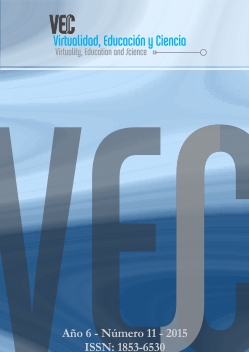Tactile interfaces applied in learning process in special education
DOI:
https://doi.org/10.60020/1853-6530.v6.n11.12768Keywords:
natural Interfaces, tactile interface, intuitive interface, special education, educational toolAbstract
Nowadays, tactile technologies have become part of everyday life for many people. These technologies can be found not only in the labor field, but also in the educational field with great diversity of uses and applications. The massive use of these technologies by diverse age groups is directly related to how intuitive they are for the user. Through a research project conducted by an interdisciplinary team, their usability was tested. Also, how children with disabilities have access to the use of various technologies intuitively or naturally promoting the incorporation of significant academic content developed in the school was evaluated quantitatively and qualitatively. The project Natural Interfaces released results that serve as the basis for the use of Tactile Interface as a special education facilitator element and for establishing them as significant learning methodologies by substantially incorporating new knowledge in a cognitive structure in a non-arbitrary way and based on prior learning.
Downloads
Published
Issue
Section
License
The generation of derivative works is allowed as long as it is not done for commercial purposes. The original work may not be used for commercial purposes.


